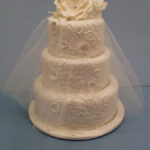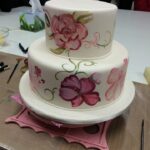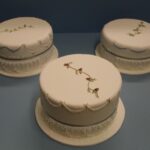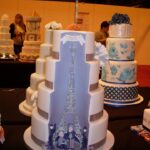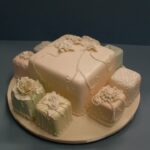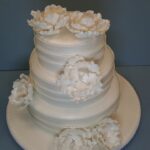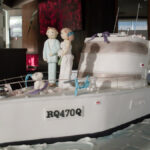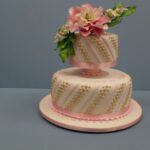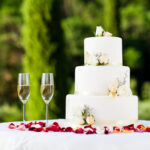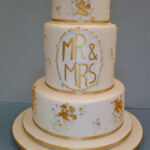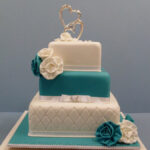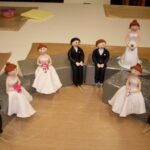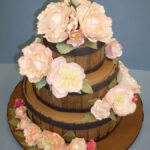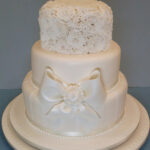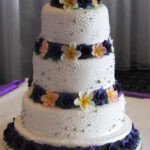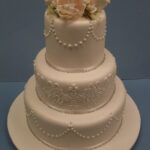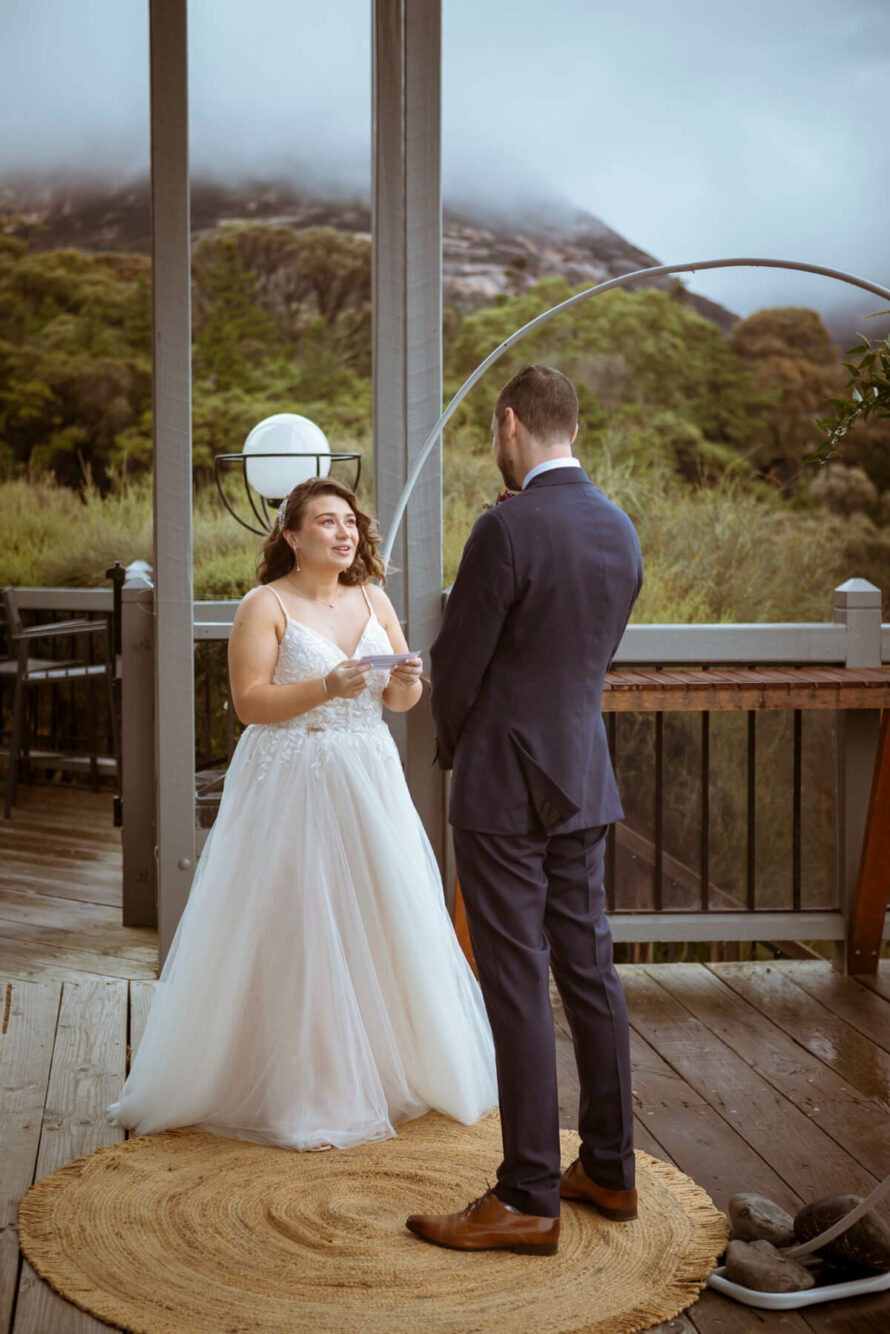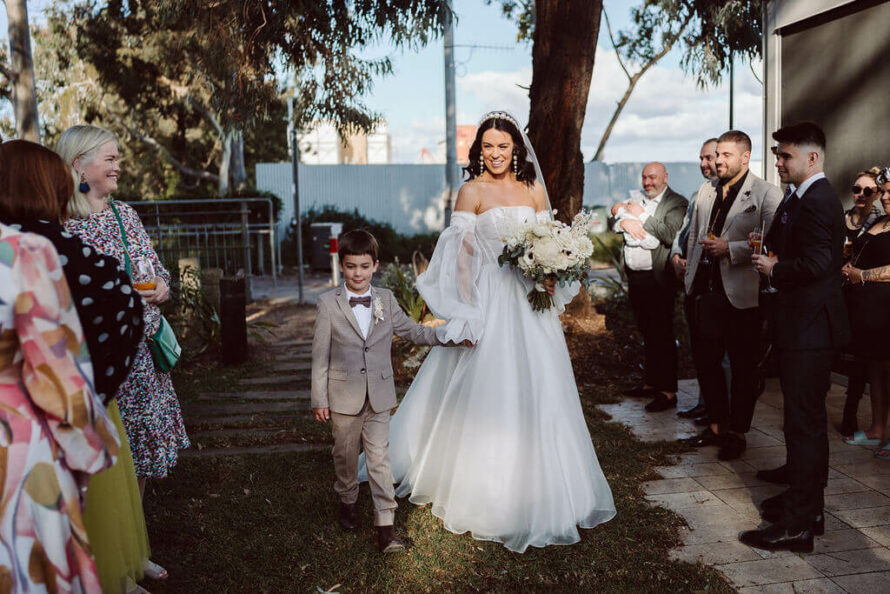Tall or short? Two tiers or four tiers? Mud, rosewater or carrot? Classic or quirky? Like your wedding dress, your wedding cake is a wonderful way of expressing your personality, reflecting the romantic atmosphere of your big day – and unleashing your creativity!
With more than 40 years – and thousands of wedding cakes to her name – Mary Reid has been making – and decorating – cakes since she was just 16 years old, when she first fell in love with the art of baking and making wedding cakes.
Four decades later, she runs award-winning Merivale Cakes and Crafts in Toowoomba, Queensland, which specialises in exquisite cake creation for between 150 and 200 weddings every year.
During her highly successful career, Mary has watched many wedding cake trends come and go, such as the shift from the traditional fruit to mud cake and the introduction of different icings and exciting new tools that decorators could use to create dream wedding cake designs for their clients.
Every year, she travels overseas to attend international cake exhibitions to stay on top of what’s happening in the wedding industry around the world. Below, Mary shares the top trends she’s seeing coming through in 2015 – 2016.
Bigger is better
Gone are the days of dainty cupcakes, says Mary, as grand, multi-tiered cakes are making a comeback in a big way.
“Up until recently, we’ve had requests for two-tier cakes, but now we’re being asked for three and four tier cakes,” she explains. “Even if the bride does not need that volume, she might like the idea of a big, grand cake, so she might have a polystyrene decorated cake at the bottom, and the top three tiers are actual cake.”
One of Mary’s popular cake designs in her business is actually based on her own wedding cake, which a decorator made for her back in the ’70s.
“It was an unusual structure of two big cakes on the bottom, side by side, with one cake on top. The side designs were three runs of very fine ribbon and separated by two hand-piped patterns that went all around the cake,” she recalls.
Bring back the bling
Recently, brides have gone through a period of requesting diamante toppers or sugar brides and grooms on their wedding cakes, notes Mary. However, “it looks like brides now want to make more of a statement and are asking for large, floral sprays as well as embellishments such as pearls, ribbons and bling.
“They’re looking for design elements on their cake that are representative of either their invitations or dress or heirlooms or maybe their mum’s cake,” explains Mary. “They’re the design ideas that we’re finding are popular now.”
The bold and the beautiful
According to Mary, when it comes to the colours of their wedding cakes, brides are looking beyond the traditional shades of white and ivory and following fashion trends. Why select a conservative cream-coloured cake when you can choose fabulous turquoise, stylish deep purple or glamorous metallic gold and silver?
“When you’re looking at the fashions overseas in particular, big, bold and bright colours are back in,” says Mary, who currently has a number of vibrant blue wedding cake orders to fill, with beautiful coloured flowers on top.
Think three-tone grey roses the width of your hand or navy blue poppies.
“I’m also looking at making a teal and white checkered cake that’s half white and half teal at the bottom, I’ve got a Wedgewood blue three-tier cake on order and we’re getting ready to do a purple and gold cake, too,” she adds.
Death by chocolate
While brides are thinking outside of the box in terms of colour and embellishments, they’re choosing to go back to classic, rich mud cake flavours – dark, milk, white, caramel and marble, although some of Mary’s students can create 20 different kinds.
“We went through a short period where brides were getting adventurous and wanting hazelnut with strawberry through it and that kind of thing,” notes Mary.
“But we’ve found in the last six months that there’s been a return to mudcakes, so brides are moving away from the contemporary flavours of rosewater or banana with poppyseed and back to the foundation mud flavours.”
Lovely lace
Since Prince William and the Duchess of Cambridge Kate Middleton married in 2011, intricate lacy designs have re-emerged recently, especially as the technology used for cake decorators has progressed in leaps and bounds lately, notes Mary.
“In the ’50s and ’60s, to put lace on a cake, you used either copper lace or handpiped lace extensions. That took hours,” she explains. “With the advances in technology and food production, we now have different types of products out there that allow you to spread a liquid icing onto a silicon mat and peel it off in the form of a very fine string of lace. These technologies have revolutionised wedding cake designs in a lot of cases.”
Take two
It’s becoming increasingly common that the day after the wedding, the parents of the bride or groom will organise a brunch or barbecue, often for family and friends who have travelled far for the wedding.
During the event, the couple may cut another cake, called ‘the morning-after cake’, explains Mary, who creates at least two such cakes a month. This is often cut into larger portions which is given to those who are making the journey back home after the wedding. Alternatively, instead of buying a separate cake, the couple may order a three-tier cake for the wedding, where they will share two tiers with guests. Then, the next day, they will cut the third tier.
Cake painting
During her trips overseas to the international cake shows, Mary has spotted a rise in sugar craft and cake painting from the central European market over the last seven or eight years, which is now becoming popular with modern brides. Some of these cakes tell beautiful stories of the couple or have hand-painted designs featured on the sides, detailed floral work profiles or even faces.
“Social media has introduced a large number of designs that are done by decorators around the world and these designs are just mind blowing,” Mary says. “What it means is our clients are seeing a lot more creative work so they’re quite keen to choose something that’s different.”
According to Mary, another reason behind the increased popularity of cake painting in Australia is the rise of classically-trained artists transitioning to cake decorating, who are now showcasing their creativity and skills through their work.
Five things you should know before meeting your cake decorator
Here are a few helpful pieces of advice Mary has offered brides and grooms when it comes to choosing a wedding cake.
- Know your numbers. “You have to know your guest list number and whether the cake is being served as treat or dessert. Those decisions will influence the size of your cake.”
- Find some inspiration. “If you don’t already have a design in mind, bring certain elements to your consultation that will help influence it, such as a photo of your dress, the colours of your theme, flowers or invitations.”
- Do your homework. “Ask to see your potential cake maker’s portfolio,” says Mary. “That way, you won’t get any surprises on your big day!”
- Consider getting your cake delivered. “Most cake makers offer a delivery service. Consider taking them up on it. That way, the couple won’t have to worry about picking up the cake on the wedding day – or the possibility of it becoming damaged,” Mary suggests.
- Share your story with the decorator. During her consultations with clients, Mary makes an effort to get to know the couple and listen to their story, all of which help her include unique elements in the cake. For example, one couple met on the beach, so on their wedding cake, behind the flower sprays, she hid tiny sugar shells. Another couple were firefighters, so Mary created tiny fire helmets and popped them on the cake.
